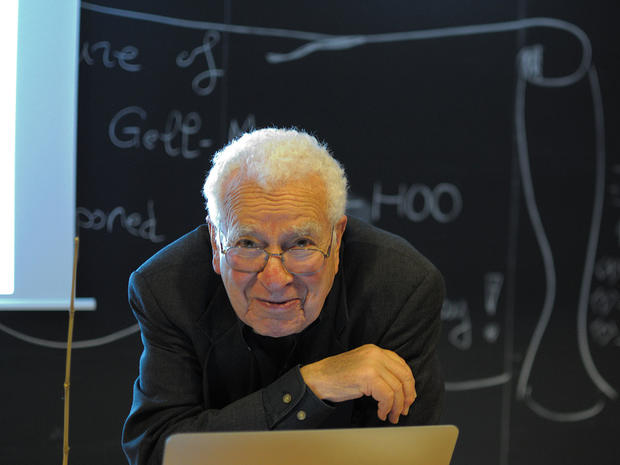Scientists Discover Elusive Subatomic Particle - The Pentaquark - By Accident
GENEVA (CBS SF) -- Accidents happen, and in a recent scientific accident in Switzerland, researchers stumbled upon one more subatomic piece of the mysterious puzzle known as matter -- the pentaquark.
An international team made the discovery at CERN's Large Hadron Collider (LHCb),the world's most powerful particle collider, and presented their findings in the journal Physical Review Letters.
Now, the 'elusive' pentaquark joins the pantheon of subatomic particles composed of quarks - the building blocks of matter. These elementary particles cannot be directly observed, but their existence has been confirmed during scientific experiments at the Stanford Linear Accelerator Center.
When physicist Gell Man first presented his elegant theory as to the existence and behavior of quarks in 1964, he posited they could combine into groups, forming bigger particles. "It is fun to speculate about the way quarks would behave if they were physical particles of finite mass (instead of purely mathematical entities as they would be in the limit of infinite mass)," he wrote. Fast-forward 50 years and Gell-Mann's speculative 'fun' is reality. Take two up quarks, one down quark, one charm quark and one anti-charm quark, and you get a "pentaquark state." Inside Science playfully described it as a "party of five."
The landmark discovery came about by accident as researchers were studying a three-quark particle known as the "bottom lamda baryon." A graduate student noticed something odd -- a "short-lived particle about 4 or 5 times more massive than a proton." It was the exotic pentaquark, containing a proton's 3 quarks, a charm quark, and a charm antiquark.
Syracuse University physicist Sheldon Stone, who co-authored the study, told Inside Science, "It's better to be lucky than good, but it's really good to be both good and lucky."
"The pentaquark is not just any new particle," said LHCb spokesperson Guy Wilkinson. "It represents a way to aggregate quarks, namely the fundamental constituents of ordinary protons and neutrons, in a pattern that has never been observed before in over fifty years of experimental searches. Studying its properties may allow us to understand better how ordinary matter, the protons and neutrons from which we're all made, is constituted."
Wilkerson told Wired the next step will be to study how the quarks are bound together with the pentaquarks. "Why have we found these particular pentaquarks? Why do they have the mass that they do? How are the quarks bound together? What other pentaquarks are out there? For sure, there must be others," he said. "We must look for other pentaquarks, and the theorists will tell us where to look."
CBSSF.com writer, producer Jan Mabry is also executive producer and host of The Bronze Report. She lives in Northern California. Follow her on Twitter @janmabr.





